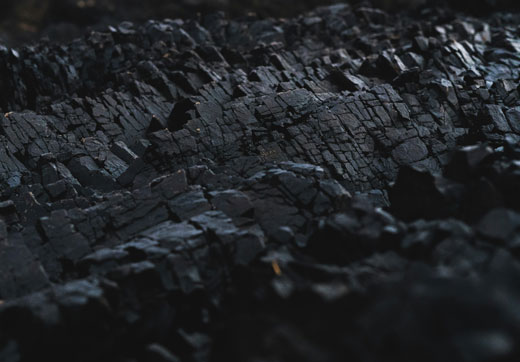
Oak Ridge National Laboratory Turns Coal into Graphite
About 500 miles south of Semco Carbon’s manufacturing facility in Lorain, OH, in the hills of eastern Tennessee, sits Oak Ridge National Laboratory (ORNL), a facility with a storied past in America's nuclear program. Today, this national laboratory continues its tradition of breakthrough research, but with applications far beyond nuclear power. One particularly promising development at ORNL involves transforming a declining but valuable material—coal—into high-quality graphite essential for renewable energy and clean energy technologies.
Coal's Second Act: Clean Energy Technologies
For generations, coal powered America's industrial might. As the nation shifts toward cleaner energy sources, coal mining communities face uncertain futures. But ORNL researchers have developed an innovative process that could give coal a second life by converting it into graphite—a valuable material that commands significantly higher market prices than raw coal.
The conversion process developed at Oak Ridge takes advantage of coal's carbon-rich composition. Through controlled heating and chemical processing, researchers can restructure coal's molecular arrangement into the characteristic layered structure of graphite. This transformation preserves coal's carbon content while altering its properties and thus its potential applications. As carbon graphite specialists at Semco, we see electric vehicle batteries, molds for gold ingots, and thousands of other applications of graphite, many of which we realize in our shop.
Domestic Graphite Production
The timing of this breakthrough couldn't be better. Currently, the United States imports nearly all its graphite, with China dominating global production. This dependence creates supply vulnerabilities for American manufacturers who rely on graphite for numerous applications. Think back to 2020 and how new tariffs and pandemic-exacerbated supply chain woes affected graphite machining.
ORNL's coal-to-graphite conversion offers a path toward domestic graphite production using existing coal resources. Were it to develop this technology, the United States could reduce its reliance on imported graphite, and at the same time provide economic opportunities in regions historically dependent on coal mining.
Applications in Clean Energy
The graphite produced through ORNL's process isn't just any graphite—it's high-quality material suitable for demanding applications. Perhaps most significantly, this graphite can be used in electric vehicle batteries, where it forms the anode material that stores and releases lithium ions during charging and discharging cycles.
Beyond EV batteries, the synthetic graphite has potential applications in fuel cells, energy storage systems, and other components critical to renewable energy infrastructure. As the world transitions toward cleaner energy technologies, demand for graphite is projected to increase dramatically. The demand could easily outstrip current supply capabilities.
Environmental and Economic Benefits
Converting coal to graphite offers many benefits. From an environmental perspective, it provides a cleaner use for coal resources than burning it to create electricity. Economically, it creates higher-value products from a relatively low-cost raw material. This could generate new sources of revenue in coal-producing regions.
The process also demonstrates how traditional energy resources can contribute to clean energy development. Rather than viewing coal solely as a fuel to be burned, ORNL's approach recognizes it as a carbon resource with many and diverse potential applications.
Challenges and Future Development
While promising, ORNL's coal-to-graphite conversion technology still faces hurdles before widespread commercial implementation. Researchers continue working to optimize the process, reduce energy requirements, and ensure consistent product quality across different coal types.
The laboratory is also exploring partnerships with private industry to scale up production and demonstrate commercial viability. These efforts include evaluating different coal sources to determine which yield the highest quality graphite most efficiently.
Implications for the Graphite Industry
At Semco Carbon, we follow developments like ORNL's coal-to-graphite conversion with great interest. As graphite machinists, we understand the importance of material quality, consistency, and domestic availability. Technologies that expand the graphite supply chain and potentially introduce new material variants could create both opportunities and challenges for graphite component manufacturers like us.
While these developments may take years to impact the commercial graphite market, they represent the kind of innovation that shapes our industry's future. The ability to produce high-quality graphite domestically from abundant coal resources could fundamentally alter the graphite supply landscape—potentially stabilizing prices and reducing supply uncertainties.
For both coal-producing regions and graphite-consuming industries, ORNL's work represents a promising bridge between America's energy past and its clean technology future.
